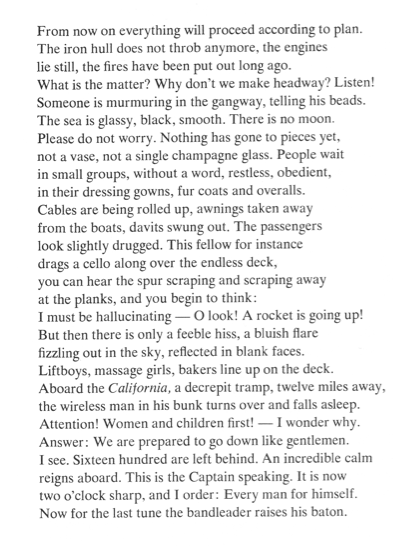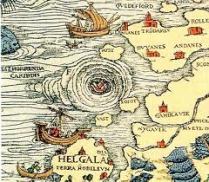
ICEBERG DEAD AHEAD
One hundred and ten years ago, at twenty minutes before midnight in the North Atlantic, an unsinkable dream machine named Titanic struck an iceberg and sank within three hours, with over 1500 lives lost. The iceberg carried on as before, true to its own implacable nature.
Here at DP, we have long interpreted the story of the Titanic as an early warning for what happens when arrogant hubris obliterates our collective ability to anticipate or even comprehend the consequences of our limitless capacity for technological invention, a condition that Günther Anders called “inverted utopia.”
With regards to the climate emergency, some in well-insulated positions of geographic or economic privilege still quibble over whether we have struck the iceberg quite yet, though surely nobody with a basic grasp of the data fails to see the ice cubes raining down on the foredeck. Many in the global south are already suffering severe consequences, slow violence that will become ever more deadly in years to come.
At least on the Titanic, Captain Edward Smith tried to avert collision, though the physics of speed and mass intervened in favor of the berg. He surely felt a magnified degree of urgency given his knowledge that there were nowhere near enough lifeboats for passengers and crew, and that the crew had received scant training in how to abandon the magnificent vessel on her maiden voyage. Why bother to think about lifeboats when you are unsinkable?
Today, when we are not pretending that the iceberg is a mirage, we try to convince ourselves that the iceberg can be averted by our own unsinkable dream machine: Net Zero before 2030; Carbon Neutral before 2050; the Green New Deal; blah blah blah. Alas, there are those same naggingly inescapable problems of speed, mass and momentum. The good ship USS Mammon, she’s a hard hulk to steer, aye.
We are also burdened by that same nagging problem of lifeboats: not enough of them, with unequal access to those few that exist; little or no training on how to manage the panic and chaos of countless numbers of people attempting to secure a severely limited number of chances to survive; inadequate supplies of food, medicine and rudimentary survival gear on board the lifeboats; and a pronounced paucity of skilled leaders for emergency evacuation and forward navigation.
Titanic survivors were brought on board the Carpathia, whose passengers included a gentleman named James Fenwick. Mr. Fenwick somehow came into possession of a lifeboat pilot biscuit; in 2015, that inedible survival biscuit was sold at auction for 15,000 British pounds. Inverted Utopians prefer not to discern lessons from our hubristic disasters; so much more fun to sell the memorabilia for whatever price the market will bear.
The lessons, inevitably, will thereby become ever more severe.

COLLAPSIBLE BOAT D IN THE MIDST OF THE UNIMAGINABLE










